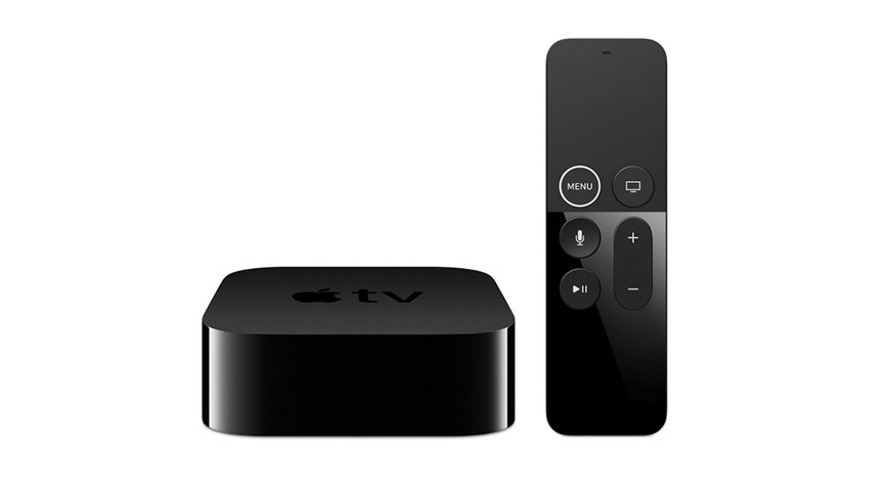
For a while now, I’d been convinced that Apple’s biggest mistake in its bid to become a major player in the TV industry has been its puzzling decision not to roll out a lower priced streaming device.

The Apple TV, which sells for $180, has little to differentiate it from Amazon Fire TV or Roku devices which sell for just $29. Even if you’re a huge Apple fan, it’s hard to argue that those differences are worth $151.
Especially since the Roku and Amazon sticks sit nicely behind a TV that’s hung on the wall, whereas the Apple TV is a puck-like device that needs to be stuck somewhere.
This is even more puzzling in that Apple has successfully created lower-priced devices before, the iPod Nano and Shuffle being prime examples.
Recently, however, I’ve come to the conclusion that while creating a lower priced device was a big mistake on Apple’s part, it was not in fact, their biggest mistake in regards to TV.
That honor instead goes to their failure to create an Apple TV operating system that worked on devices that were not Apple TV.
As the streaming wars continue, it seems more and more clear that user interface will be one of the key differentiating factors in determining winners and losers, if not the key differentiating factor.
The smarter way to stay on top of the streaming and OTT industry. Sign up below.
And if anyone in the industry had a reputation for creating top notch user interfaces, it was Apple.
Let’s click back a screen, though, and look at why Amazon and Roku had such success. Because the truth is no one really needs a streaming stick or an independent OS.
Unfortunately, in the early years, the smart TV manufacturers didn’t pay much attention to interfaces, and as such, even connecting to Netflix via a smart TV was a fairly masochistic experience. That’s why users were so captivated by Roku and Amazon’s sticks, as they offered up an easy to use interface with a wide range of viewing options (something the smart TV OEMs did not) and, at just $29, did not represent yet another major investment.
Fast forward a few years, and there have been two key developments in the TV operating system space.
The first is that TV OEMs like Samsung, VIZIO and LG have realized that interface is indeed important and have been working assiduously to make theirs every bit as user friendly and useful as the streaming devices.
The second is that the streaming device manufacturers moved to get their operating systems onto TV sets. Roku struck deals early on with several low priced Chinese manufacturers to put their iPhone-esque interface onto those TVs and, as such, Roku-powered TVs now account for around 25% of the US market. Amazon, seeing the missed opportunity, began striking its own deals, both in the US and abroad.
Which leaves Apple.
Had they concentrated on polishing their interface and making it widely available, they could have made those same deals that Roku made, possibly even with larger manufacturers: “LG, powered by Apple” would have been a huge selling point, especially given the state of smart TV interfaces several years back.
That would have allowed Apple to own a good chunk of the U.S. smart TV market, which would have benefitted them in several ways:
Movie Rentals: iTunes used to be the go-to place for movie rentals but thanks to both a lack of distribution and a series of arcane restrictions that made it difficult to shift a rental from device to device, Apple quickly ceded that position to Amazon.
The Hub Thing: Surrendering the movie rental business to Amazon was double plus ungood because viewers who are renting movies via a particular platform tend to stick around, and Apple could have sold those viewers on their overall Apple TV hub platform, which involves using the TV OS and iOS to sell subscriptions to a range of streaming apps.
Since Apple, unlike Roku and Amazon, does not ask for a share of ad revenue, they are in a much better position to strike deals with the various Flixes, which, with wider access, would have made them the leading platform in the streaming market.
The Privacy Thing: Apple is very good about protecting users privacy and that would have made their operating system more attractive to viewers, programmers and TV manufacturers. It would have made advertisers' lives a bit more difficult in the short term, but in the long term, stricter privacy measures would have benefited everyone.
The Standardization Thing: One of the problems with advertising on streaming these days is that things like measurement and frequency capping are difficult as there is no easy way to compile data across the various walled gardens that make up the streaming ecosystem, particularly if viewers are watching via both Amazon and Roku. Having a dominant operating system that most people used to watch TV would have made collecting all sorts of TV data much simpler, and, given Apple, more secure.
The iOS Thing: The ability to keep track of your viewing habits from iOS to TV OS would have been much simpler too. It might even have increased the amount of mobile viewing.
In retrospect, given that Apple’s instinct is to own the entire ecosystem--both hardware and software--of everything it makes, it is not surprising that they did not try and make their operating system available to other companies,
But I suspect they would have been in a much better position and been the dominant player in the TV industry if they had.
Alan Wolk is the co-founder and lead analyst for media consultancy TV[R]EV

